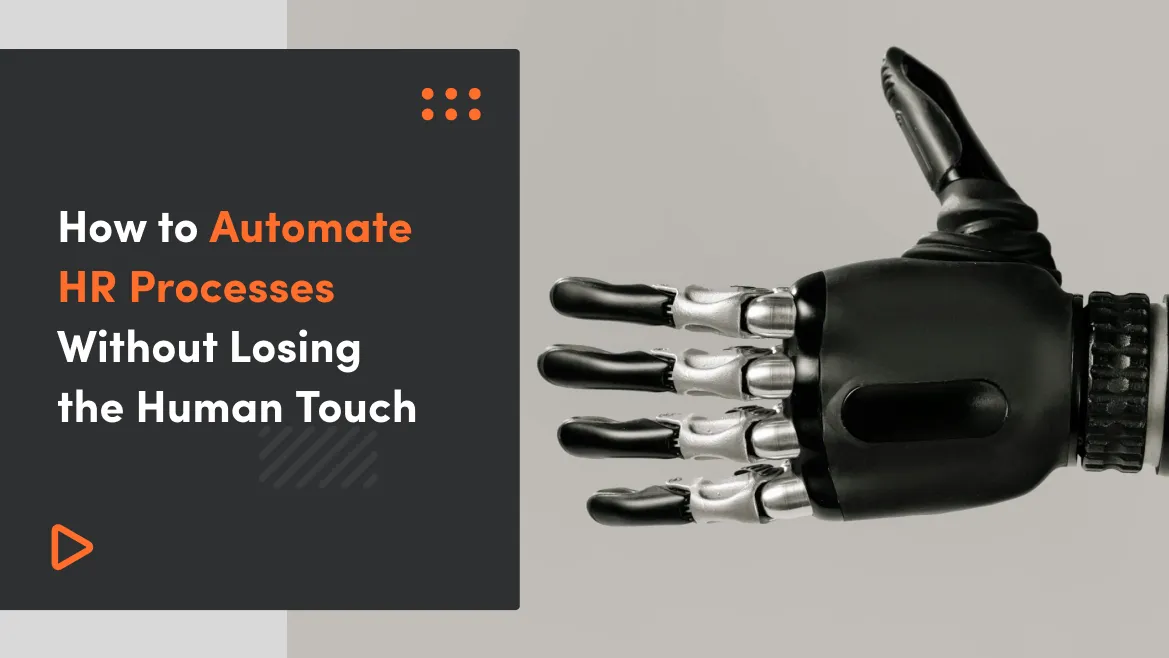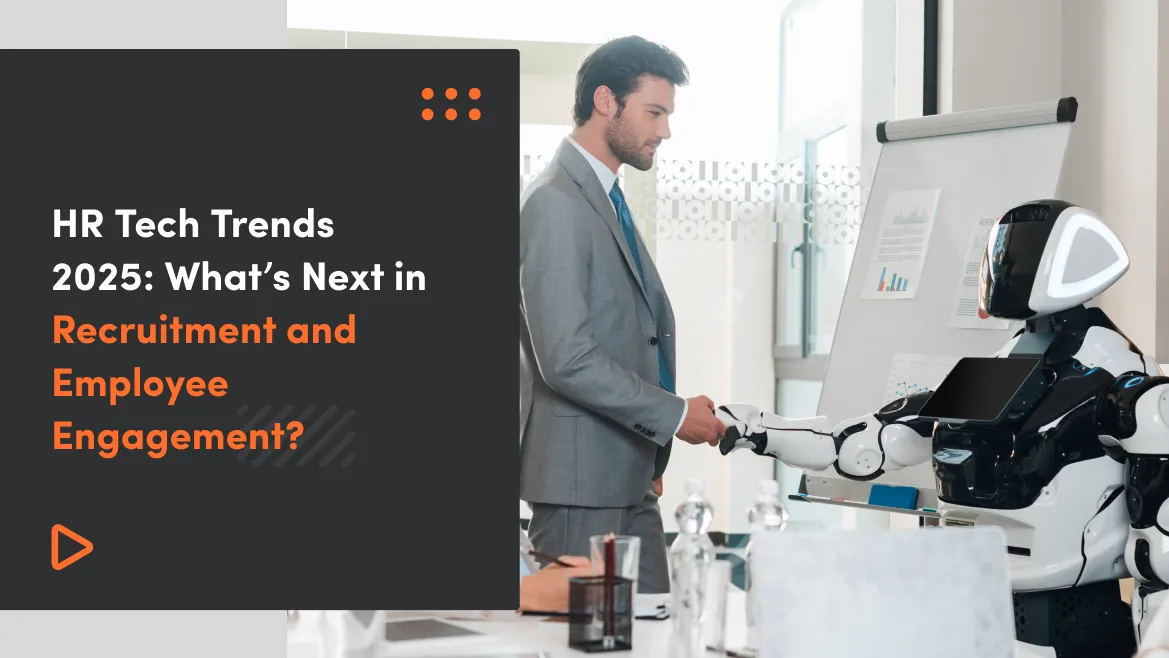Are you looking to improve your HR processes, optimize your workforce, or manage high-volume recruitment?
To do this you need to understand the different types of HR software to make the right decision for your business.
There are three classifications to consider:
- HRIS (human resources information system),
- HCM (human capital management),
- HRMS (human resources management system).
Each type of HR software serves a unique purpose and offers different advantages, from centralizing employee data and ensuring compliance to optimizing workforce performance and managing recruitment pipelines. Nowadays, many companies are turning to ready-made SaaS solutions because they are easy to use, quick to deploy, and cost-effective.
However, for enterprises with more complex and specific HR requirements, custom solutions may be a better option.
Why?
- 1. They provide greater flexibility in adjusting to the current needs of the company and allow businesses to avoid unnecessary features, focusing only on what's essential.
- 2. Additionally, custom solutions can be seamlessly integrated with other systems within the company, ensuring a more cohesive and efficient workflow.
- 3. Stick around as we break down the four main types of HR software to help you make informed decisions for your HR tech needs.
Human Resource Information System (HRIS)
Let's start with the Human Resource Information System.
HRIS is a software solution designed to provide easy access to an actionable database that helps keep all HR systems running smoothly. In its core functions, it serves as a centralized repository for all employee-related information.
This includes personal details, job titles, salary information, performance records, and more. This is especially important for medium to large enterprises that need to ensure data accuracy and regulatory compliance. By having all this data in one place, HR professionals can easily access and manage talent pool.
Additionally, HRIS features can offer automation of various processes. For example with employee self-service where employees can access and update their personal information, view pay stubs, or request time off.
For large enterprises, the scalability of HRIS is another significant advantage. As the company grows, the appropriate HRIS system can easily accommodate the increasing volume of employee data and additional HR functions without the need for a complete system overhaul. But can it be done with a ready-made SaaS solution?
Bamboo HR overview
Let's look at example of Bamboo HR, organizations choose it for its user-friendly interface and comprehensive features. It offers a wide range of functionalities, including applicant tracking, employee self-service, and performance management. It is particularly favored by medium-sized businesses looking for an affordable yet robust HRIS solution.
To describe it shortly, lets summarize BambooHR pros:
These are:
- User-friendly interface
- Comprehensive HR features
- Customizable reports
- Employee self-service
- Integration capabilities
Cons of Using BambooHR System pointed out by various companies:
- Limited payroll functionality
- Higher cost for more advanced features
- Mobile app limitations
- Limited customization
- Support response time
Human Capital Management (HCM)
Now, let's take a look at HCM, and understand how it differs from HRIS.
- HRIS focuses primarily on centralizing employee data - keeping it in one place.
- HCM takes a broader approach, focusing on optimizing workforce performance and managing talent strategically. At its core functions, HCM offers a comprehensive set of practices for recruiting, managing, developing, and optimizing the human resources within the organization. It includes all the functionalities of an HRIS, HR automation tools and other tools and features that go beyond just managing employee data.
One of the key aspects of HCM is its focus on talent management and analytics. This involves work schedules or forecasting used for planning and business growth. The data is pulled from the various data centers to run reports that help HR professionals organize the company’s workflow.
Another important feature of HCM is compensation management. This involves structuring and managing employee compensation packages, including salaries, bonuses, and benefits.
HCM software provide tools for career planning and development, enabling employees to map out their career paths within the organization. This includes identifying opportunities for skill development, training programs, and potential career advancements.
Additionally, HCM systems can offer analytics, with various HR metrics such as employee turnover, productivity, and engagement. These analytics help HR leaders make data-driven decisions to improve workforce strategies and address potential issues before they escalate.
Hibob Platform Overview
Hibob is an HR platform designed to streamline HR processes, enhance employee engagement, and improve overall productivity. It offers features for onboarding, time and attendance, performance management, compensation, and employee analytics.
Lets summarize HiBob pros:
These are:
- Intuitive design easy to navigate.
- A wide range of tools including onboarding, performance management, and compensation.
- Highly customizable.
- Advanced analytics
- Employee engagement tools that improve communication.
Cons of Using HiBob System pointed out by some companies:
- Pricing
- Complexity of some features.
- Long learning curve.
- Integration issues.
- Slow response time.
Try our developers.
Free for 2 weeks.
No risk. Just results. Get a feel for our process, speed, and quality — work with our developers for a trial sprint and see why global companies choose Selleo.
Human Resource Management System (HRMS)
An HRMS is an integrated software solution that combines the functionalities of both HRIS and HCM, providing a comprehensive suite of tools to manage every aspect of HR operations, especially when you need a flexible system.
At its core, HRMS encompasses all the data management capabilities such as:
- employee record-keeping, payroll processing,
- time and attendance functions,
- compliance management.
It centralizes and automates these fundamental HR tasks. However an HRMS goes also further by integrating advanced features for workforce optimization and talent management that are typically found in HCM systems.
For instance, with an HRMS, payroll processing becomes more efficient and error-free. The system can automatically calculate salaries, taxes, and deductions, and manage direct deposits. This automation saves time and reduces the risk of manual errors.
On the talent management side, HRMS includes features such as recruitment and applicant tracking, performance management, learning and development, and succession planning.
The benefits of HRMS for large companies with diverse HR needs can be great with the right solution. By integrating all HR functions into a single system, HRMS reduces the complexity and cost of managing multiple different systems. It also enhances data security and compliance by providing great t access controls and audit trails.
Overview of Workday Platform
Workday is a cloud-based enterprise platform that offers integrated applications for finance, human resources, planning, and analytics. It is designed to help organizations manage and streamline their business processes through a single system.
Workday's platform is known for its flexibility, user-friendly interface, and robust functionality, making it a popular choice among large enterprises and organizations.
Pros of Workday
- Comprehensive HR and financial management functionalities
- User-friendly interface
- Strong analytics and reporting features
- Highly customizable
- Flexible integration capabilities
Cons of Workday
- High Cost.
- Complexity.
- Challenging learning curve for new users.
- Difficult when submitting expenses and generating expense reports.
- Performance Variability.
- Performance inconsistencies that affect the user experience.
How are an HRIS, HRMS, and HCM different?
HRIS (Human Resource Information System):
HRIS software focuses on the administrative functions of HR, such as employee data management, payroll processing, benefits administration, and compliance tracking. It is ideal for organizations looking to streamline their core HR processes and maintain accurate records. If you want to learn more, read our article about what Is HRIS and why does my business need one?
HRMS (Human Resource Management System):
HRMS software encompasses all the functionalities of an HRIS but also includes additional features for talent management, such as performance appraisals, recruitment, and training. It is suitable for companies that want to integrate employee development with their HR operations.
HCM (Human Capital Management):
HCM software takes a comprehensive approach to managing the workforce, combining HRIS and HRMS features with strategic tools for workforce planning, analytics, and employee engagement. It is best for organizations aiming to align their HR strategy with overall business goals and improve employee lifecycle management.
To make it simple:
HCM software emphasizes strategic people management and employee engagement, HRIS focuses on accurate data management and administrative HR tasks, while HRMS serves as a general platform integrating both administrative and talent management functions.
Conclusion and Recommendations
When choosing the right HR software for your business, you can improve your processes with ready-made SaaS solutions like the example we mentioned above. But they may not always fit your business style
If your company is large and require comprehensive features of an HRMS or HCM going into SaaS solution may not be enough.
Ensuring that the solution you choose can scale with your business growth and integrate seamlessly with other existing systems is also crucial.
In situations like that it’s worth taking a look at customized options. Mostly due to it’s flexibility and lower costs in the long run.
Each company is unique, and finding the right HR software can make a significant difference in your overall business efficiency and employee satisfaction.
Thank you for watching! If you found this video helpful, please like, share, and subscribe to our channel for more insights on optimizing your business operations. Don't hesitate to ask questions or comments below!




